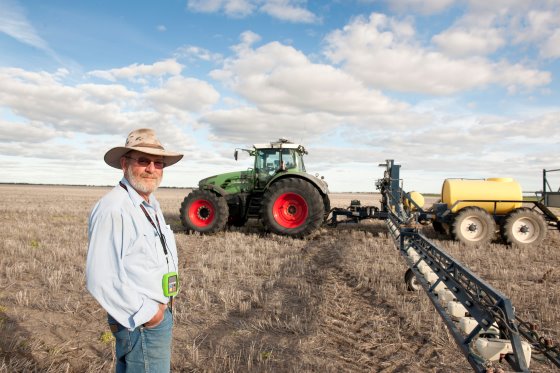Gerrit Kurstjens, is a pioneering farmer who has already clocked up 40,000ha of autonomous operations on 13,000ha of cropping area at Beefwood Farms, Moree in New South Wales, Australia. In this exclusive series of blogs he explains more about these remarkable developments.
17 years ago, when GPS steering was interesting new stuff, I stopped by a small John Deere demonstration. A few farmers and John Deere people were walking around new tractors, nothing special. Only that the tractor that was slowly going up and down had no driver. The tractor was 100 % autonomous.

The autonomy tractor was steered with the help of GPS and the rest was done by the then new headland management system that could be bought standard on the new tractors.
Now, this was 17 years ago… The autonomous system that was demonstrated, should be for sale in 2022, with extra safety sensors that stop the tractor if they detect obstacles or if someone gets in front of the tractor. It is frustrating that 17 years later the manufacturers still say “soon”. It looks like next year never comes.
Are regulations holding manufacturers back?
I am puzzled why the big tractor manufacturers that have all the know-how to develop autonomous machinery seem to be so hesitant to launch autonomous tractors onto the market. Is it because of regulations that stipulate there must be a human in the field to control the machine? Do such regulations exist? As I understand not in Australia, were a Code of Practice (COP) for agricultural field machine autonomy is being developed. As I understand other countries are working on similar regulations.
It’s hard to imagine an autonomous tractor working, while a human “supervisor” spends the day or night sitting in the middle of a field, doing nothing
In practice we have proven that a triple-layered multi-safety system on the tractor is better than having a sleepy/sleeping driver in the cab of the tractor at night. And it’s hard to imagine an autonomous tractor working, while a human “supervisor” spends the day or night sitting in the middle of a field, doing nothing.
The video below shows the autonomy Fendt 936 at work at the Kurstjens farm in Australia
The autonomous Fendt is the perfect “employee”: it doesn’t need sleep, a lunch break and doesn’t complain about 24/7 shifts. The Fendt only calls Gerrit when the job is finished or in case of a problem.
Why are there no autonomy tractors for sale ?
After begging several big tractor brands to supply an autonomy tractor system or to help us put an autonomous system on their tractor at our cost, we got answers like: “It is not in our interest to get involved in autonomous systems yet”.
It is understandable why a tractor manufacturer does not support autonomy tractors. A manufacturer’s goal is to sell more tractors and especially sell the extra numbers where the profit is. Farmers who start using autonomous tractors will need only half as many tractors. This could mean a significant drop in sales and ultimately less profit.
Therefore start-ups often have to make their own “tractors”. And that’s highly expensive and risky; the lifespan of a prototype and a newly developed autonomous system is only short, which makes these prototypes in comparison more expensive. In order for them to make economical sense, subsidy or a sponsor is needed.
Also read: Make your tractor autonomy with these 6 retrofit kits
“…Finding skilled tractor drivers remains to be a massive challenge all over the world. For some tasks, you can already turn to over 30 field robots that are or come on the market this year….”
Do you have questions or remarks regarding this blog? Join the conversation on Twitter!

